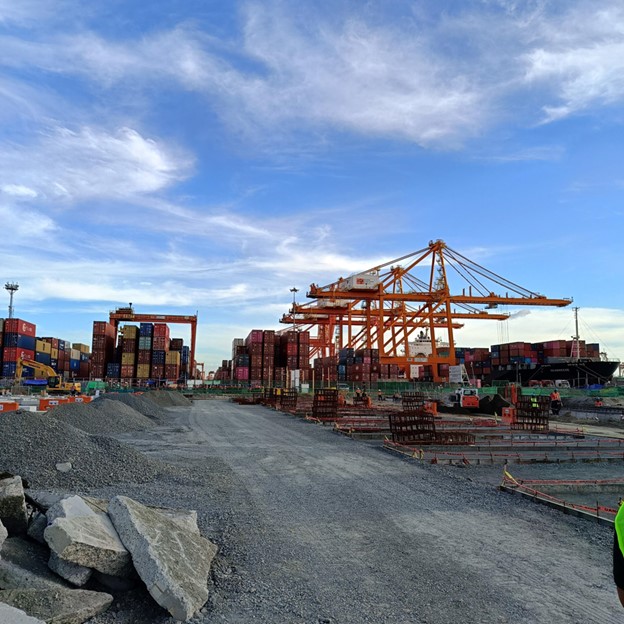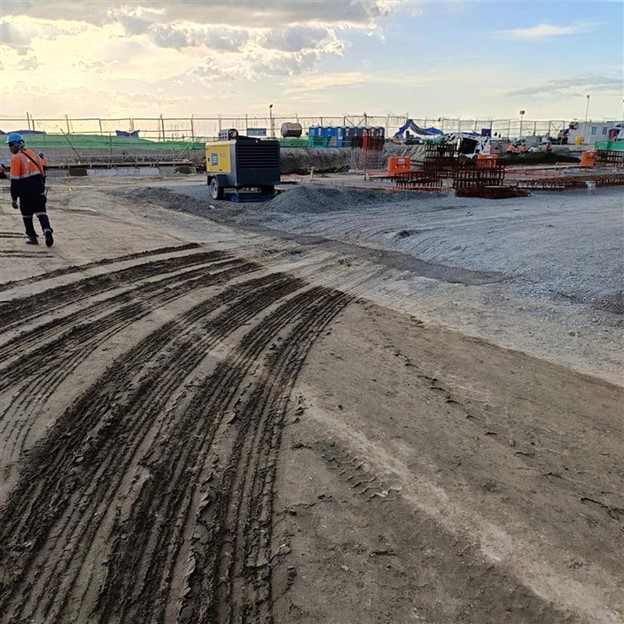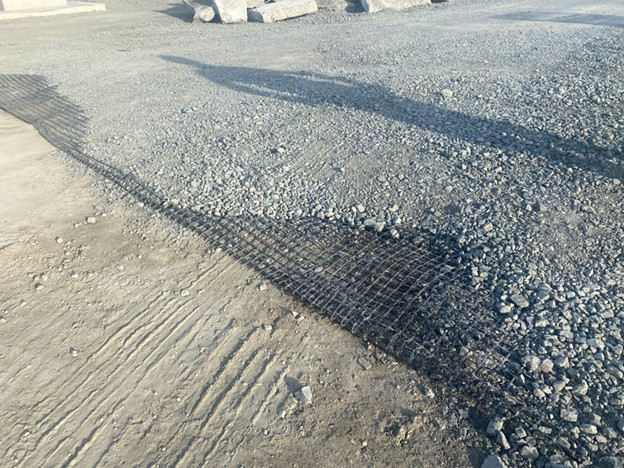One of the country’s largest port operators in the Philippines marks a crucial advancement in expanding one of the country’s vital economic ports. This initiative aims to increase container capacity to meet the escalating demands of global commerce. Amidst inherent geohazards, such as liquefaction and settlements, addressing these challenges is paramount to ensure infrastructure safety and longevity. Maccaferri’s innovative geosynthetic solution emerges as a testament to resilience, promising not only to overcome these obstacles but also to deliver substantial commercial benefits and environmental sustainability.

Challenges:
Constructed on reclaimed land this project confronts inherent geohazards, including the threat of liquefaction and settlements. This reclaimed area, while providing valuable expansion space, presents unique challenges due to its unstable nature. The project must navigate through the complexities of working on reclaimed land, which inherently carries risks of ground instability and potential subsidence. Addressing these challenges is paramount to ensure the safety and longevity of the infrastructure, requiring innovative solutions and meticulous planning to mitigate risks effectively.
Innovative Solution:
In collaboration with Maccaferri, an innovative solution was devised to tackle the complex geological conditions. Recognizing the limitations in improving deeper compressible soft clay layers, the focus shifted to the structural design of the superstructures. Basal reinforcement utilizing geosynthetics emerged as a key strategy to mitigate potential settlements, ensuring the stability of the foundation.

Maccaferri’s technical expertise played a pivotal role in executing this solution. Through meticulous design calculations and on-site support, a cost-effective approach was implemented. A crushed stone subbase, compacted over the prepared sand subgrade, formed the foundation. To further mitigate risks of settlement differentials, biaxial extruded geogrids were strategically placed between the subbase and subgrade.
The utilization of biaxial geogrids underscores Maccaferri’s commitment to innovative geosynthetic solutions. These geogrids, available in varying strengths and configurations, serve as essential reinforcements in infrastructure projects, enhancing stability and longevity. Engineered with precision, they distribute weight evenly, mitigating the risks of settlement differentials and ensuring optimal performance in challenging environments.

This groundbreaking approach not only addressed geohazards effectively but also yielded substantial commercial benefits. By distributing weight more evenly, the geogrids facilitated a remarkable reduction in crushed stone volume, leading to cost savings and a diminished environmental footprint. Such sustainable practices align with contemporary ideals of infrastructure development, underscoring the project’s commitment to economic efficiency and environmental responsibility.
Conclusion:
The successful implementation of Maccaferri’s geosynthetic solutions underscores the transformative potential of collaboration and innovation in infrastructure development. As this container terminal continues to evolve as a pivotal trade gateway, initiatives like these pave the way for enhanced economic growth and prosperity. Learn more about Maccaferri here.
 TEXTILES.ORG
TEXTILES.ORG


